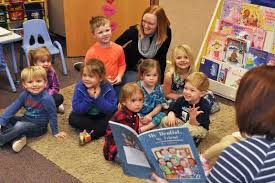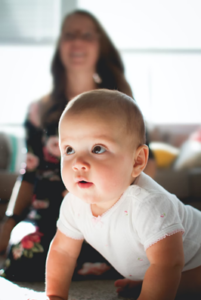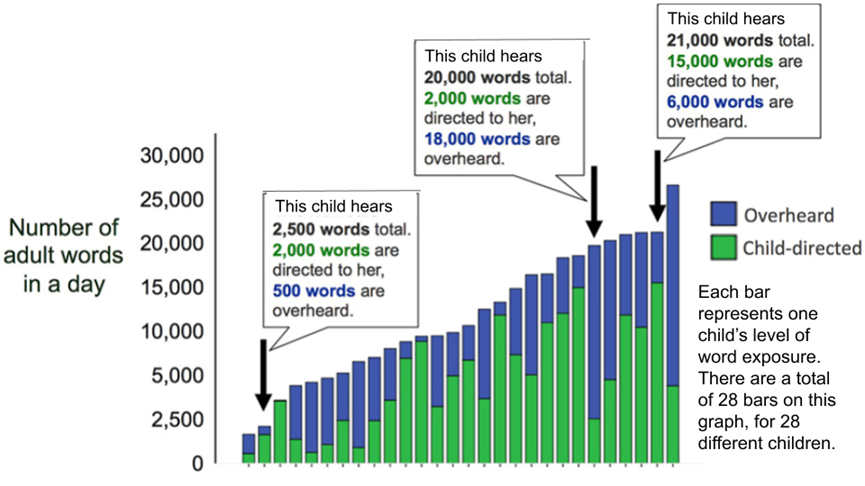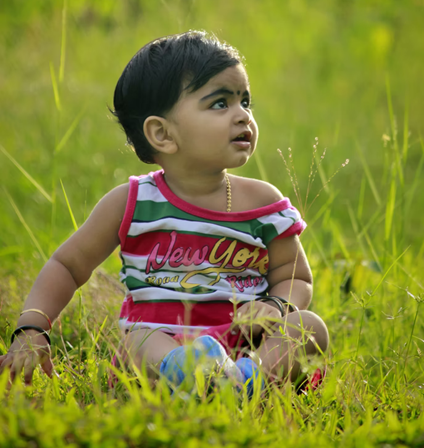Infant and toddler care and education play a pivotal role in shaping the foundation of a child’s growth and development. These formative years are a critical period of early childhood development where young minds absorb knowledge, skills, and social interactions that lay the groundwork for their future. In this comprehensive guide for infant and toddler caregivers, we delve into the purpose of infant and toddler care and education, highlighting its significance in nurturing early development.
Introduction to Infant and Toddler Care and Education
Infant and toddler child care quality, and education encompass high quality child care, infant and toddler competencies, a range of nurturing activities and experiences and an enriching environment that contribute to a child’s holistic development.
Building a Strong Foundation
The purpose of infant and toddler care and education is to establish a strong foundation for a child to respect the infant’s overall growth and future learning.
Cognitive Development
Stimulating activities and age-appropriate interactions during this period of child development knowledge lay the groundwork for cognitive skills such as problem-solving and critical thinking.
Social and Emotional Growth
Infant and toddler and child care programs and early childhood education can provide opportunities for children to develop social skills, empathy, and emotional resilience.
Language and Communication Skills
Early exposure to language-rich environments supports the healthy development of communication skills, vocabulary, and language comprehension.
Motor Skills Development
Engaging in sensory activities and play enhances fine and gross motor skills, coordination, and spatial awareness.
Nurturing Curiosity and Exploration
The purpose of elementary education is to encourage curiosity, exploration, and a sense of wonder as children discover the world around them.
Fostering a Love for Learning
Creating positive associations with learning at an early age sets the stage for a lifelong love of learning.
Establishing Routine and Structure
Infant, infant and toddler caregivers, child care settings and early childhood education introduce routines that provide a sense of security and predictability for young children.
Positive Relationships and Attachment
Early interactions with caregivers and educators help children form secure attachments and build trusting relationships.
Promoting Inclusivity and Diversity
Infant and the infant toddler education is: where high quality child care programs, child care, and education settings celebrate diversity, fostering an inclusive environment where children learn about different cultures and perspectives.
Parental Involvement and Support
Engaging parents’ early intervention in their child support children respect the infant’s development, infant care and early education enhances learning outcomes and strengthens the parent-child bond.
Professional Guidance and Expertise
Qualified early childhood educators provide expert guidance and comprehensive support services, staff education and comprehensive support services tailored to each child’s developmental needs.
Creating Safe and Stimulating Environments
The purpose is to create environments that are safe, engaging, and conducive to healthy emotional development, exploration and learning.
Play-Based Learning Approach
Play is at the heart of infant and toddler, quality child care, and education, serving as a vehicle for early learning, creativity, and self-expression.
Collaboration with Early Childhood Educators
Parents and caregivers collaborate with educators on mental health and to make therapeutic interventions to ensure consistent and holistic support for the child’s mental health and development.
Transitioning to Formal Education
Infant and toddler care and education prepare children for a smooth transition from early care to formal education by their emotional development, cognitive stimulation, fostering deep understanding of essential skills and a positive attitude towards learning.
Guiding Principles of Infant and Toddler Care and Education
Principles of Care
Decades of in depth understanding of child care, research, teaching practices and theory have produced some general guiding principles that are an important starting place for understanding infant and toddler child care, and education.
Principle #1: Children are active participants in shaping their own development.
Infants and toddlers seek out information from their environments and social partners through eye gaze, communication/language, physical touches and manual manipulations of objects. Specific types of information attract infants’ attention and provide unique access into helping them understand how the world works. For example, infants prefer to listen to infant-directed language and this type of language exposure from adults helps infants acquire language (García-Sierra, Ramírez-Esparza, Wig & Robertson, 2021; Graf Estes & Hurley, 2013). A great example of what is the purpose of infant toddler care and education is and how active participation shapes personal and professional development comes from motor development. Even after toddlers begin to walk, there is still much more improvement needed to walk efficiently. In fact, toddlers take an average of 2,368 steps each hour and also fall an average of 17 times (Adolph et al., 2012). Actively engaging in the practice of walking shapes their own developmental process in walking efficiency. Additionally, actively engaging in the practice of walking is related to individual differences in language and cognitive development since walking creates new opportunities to engage with other people, holding objects while being mobile and encountering new objects and experiences (Karasik, Adolph, Tamis-LeMonda & Zuckerman, 2012; Schneider & Iverson, 2021; West & Iverson, 2021).
Principle #2: Relationships and experiences are the primary ways development occurs.
Infants and toddlers develop through adult-child and child-child relationships and through exploring their world, both alone and with others. Sensitive, respectful, and stable relationships with caregivers serve as the foundation for the healthy development of infants and toddlers (Bornstein et al., 2020; Li et al., 2022; Raby et al., 2019). These relationships are the starting place for language, social, emotional, and cognitive development—and these relationships are literally shaping the structure of the developing brain (Bernier, Calkins & Bell, 2016; King et al., 2021; Nelson, Zeanah & Fox, 2019).
Principle #3: Development is complex and transactional.
Children and their contexts shape each other in ongoing and cyclical ways—referred to as the transactional model of development (Sameroff, 2009; Sameroff & Mackenzie, 2003). For example, each child is raised in a cultural context that shapes all aspects of development, but the child’s particular familial or cultural context may also affect the larger community context over time in complex ways. The same environmental factors can affect different children and families in different ways. Likewise, different environmental factors can have a similar effect on children. For example, toddlers from lower SES homes typically are exposed to less language; however, this is not always the case as even amongst all low SES families, some toddlers are exposed to an abundance of language while others are exposed to much less (Weisleder & Fernald, 2013). Figure 1.4.21.4.2 shows how the amount of words toddlers hear in one day differs greatly amongst families. In the graph, each vertical bar represents one child’s total amount of words they are exposed to in one day. So even though all these toddlers were from low SES families, there were significant differences in the amount of language from caregivers.
Each bar represents one child’s level of word exposure. There are total of 28 bards on this graph, for 28 different children’s behaviors. This graph shows the number of words that different kids heard from grownups in 1 day. The bottom section/green part of each bar shows the number of words that grownups said to that kid in 1 day. The top/blue part of each bar shows the number of words that kids overheard when grownups were talking to other people. For example, kid 2 heard 2,500 words total. 2,000 words are directed to her, and 500 words are overheard. Child 23 hears 20,000 words total. 2,000 words are directed to her, 18,000 words are overheard. Child 27 hears 21,000 words total. 15,000 words are directed to her, 6,000 words are overheard.
Principle #4: Development and learning occur in multiple systems or contexts.
Infants and toddlers develop as the result of the direct interactions they have with the people in their world (family, friends, non-parental caregivers), as well as the indirect influences, including community resources, policies in parental work, child care settings themselves, state child care programs and policies, and many more physical, social, and interactional environments (Bronfenbrenner & Morris, 2006; Rowe & Weisleder, 2020). Within these multiple systems and contexts, parents are children’s first and most influential caregivers and their primary sources of knowledge. The quality of these various contexts can greatly influence the developmental trajectories of infants and toddlers (Gilkerson et al., 2018; Larose et al., 2021; Shuffrey et al., 2022).
Principle #5: All areas of development are interrelated.
During the infant and toddler period, the domains of development (i.e., physical development, cognitive development, and social development) are interrelated. Development in one domain influences development in other domains. For example, an infant and toddler caregivers’s motor ability to sit independently is related to cognitive and language development (Oudgenoeg-Paz, Volman & Leseman, 2012; Veldman et al., 2019). As a result, developmental domains cannot be considered in isolation from each other. The dynamic interaction of all areas of child development, must be considered when planning for and interacting with all children, especially infants and toddlers.
Principle #6: There are vast individual differences in rates of development among children.
Each child has a unique rate of growth and development. Some children may have a developmental delay or disability requiring early intervention and/or adaptations to be successful in achieving a particular developmental outcome. Furthermore, early forming individual differences are important because they are often associated with positive outcome benefits. For an infant toddler for example, achieving motor milestones earlier (sitting or walking) is related to short-term growth in language abilities (Carina, Leinweber & Ritterfeld, 2019; He, Walle & Campos, 2015). While milestone charts can provide approximates for what is considered typical child development now, recent research into early individual differences highlights the important role caregivers have for documenting developmental progress and providing high-quality positive and responsive caregiving, and educational environments for infants and toddlers (Lopez et al., 2020; Ramírez, Lytle & Kuhl, 2020).
Principle #7: Birth to age 3 is a distinct developmental period that is the foundation for later development.
Periods of rapid growth and change, such as early childhood professionals such as during infancy, and early care, offer the greatest opportunities for experiences or interventions to influence the course of development (Raikes, Love, & Chazan-Cohen, 2004). The relationships and experiences that influence development from birth through age 3 can have a profound and lasting impact. For example, experiences during infancy infant toddler care can affect the architecture of the brain or the way the brain is “wired” (Center on the Developing Child, 2007), as well as how the brain works, including how fast it thinks, how it makes connections and remembers, how it pays attention to information, and how it forms ideas, concepts, and understandings (Fernald, Perfors & Marchman, 2006; Rose, Feldman, Jankowski, & Van Rossem, 2008). Infancy and toddlerhood is characterized by rapid growth and development of concepts, attitudes, skills, and abilities that are foundational for current development, later success in school, and lifelong learning (Domond et al., 2020; Early Head Start National Resource Center, 2012; Losier et al., 2021).
Nurturing Early Childhood Development
Early childhood development is a crucial phase in a child’s life that sets the stage for future growth, learning, and well-being. The experiences and interactions during these formative years shape a child’s physical, cognitive, emotional, and social development.
Nurturing Cognitive and Language Development in Early Childhood
Cognitive and language development are fundamental pillars of a child’s growth and learning journey. These interconnected aspects play a vital role in shaping a child’s ability to think, communicate, and engage with the world around them.
Conclusion
Infant and toddler care and education are instrumental in nurturing early development, laying the groundwork for a child’s future success. These early childhood programs provide enriching experiences for young children, building strong foundations, encouraging continued engagement with child development knowledge and fostering a love for learning, these programs create a positive and impactful start for young minds.






Recent Comments